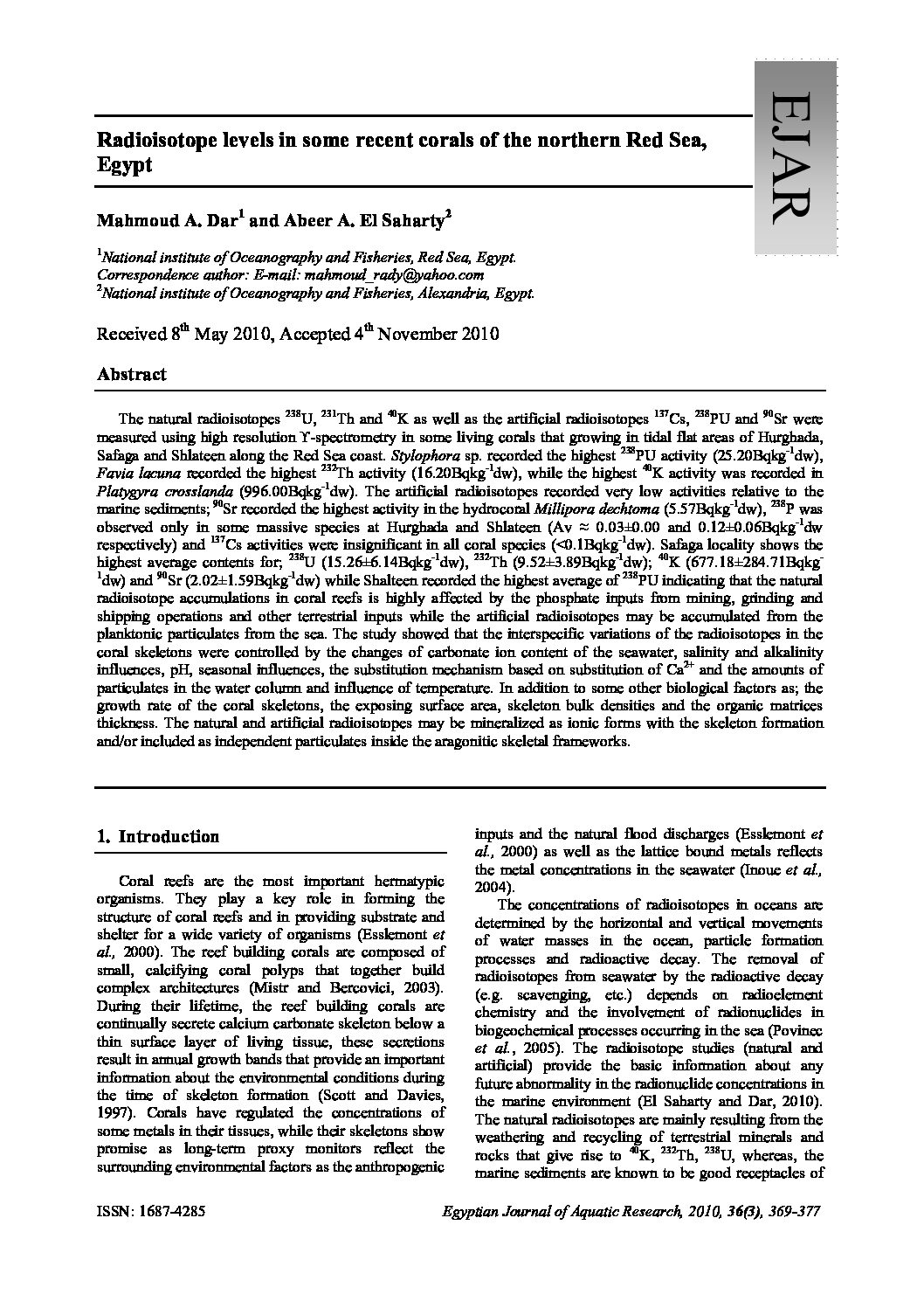Categories
vol-36Radioisotope levels in some recent corals of the northern Red Sea,
Egypt
Mahmoud A. Dar1
and Abeer A. El Saharty2
1
National institute of Oceanography and Fisheries, Red Sea, Egypt.
Correspondence author: E-mail: [email protected]
2
National institute of Oceanography and Fisheries, Alexandria, Egypt.
Received 8th May 2010, Accepted 4th November 2010
Abstract
The natural radioisotopes 238U, 231Th and 40K as well as the artificial radioisotopes 137Cs, 238PU and 90Sr were
measured using high resolution ϒ-spectrometry in some living corals that growing in tidal flat areas of Hurghada,
Safaga and Shlateen along the Red Sea coast. Stylophora sp. recorded the highest 238PU activity (25.20Bqkg-1dw),
Favia lacuna recorded the highest 232Th activity (16.20Bqkg-1dw), while the highest 40K activity was recorded in
Platygyra crosslanda (996.00Bqkg-1dw). The artificial radioisotopes recorded very low activities relative to the
marine sediments; 90Sr recorded the highest activity in the hydrocoral Millipora dechtoma (5.57Bqkg-1dw), 238P was
observed only in some massive species at Hurghada and Shlateen (Av ≈ 0.03±0.00 and 0.12±0.06Bqkg-1dw
respectively) and 137Cs activities were insignificant in all coral species (<0.1Bqkg-1dw). Safaga locality shows the
highest average contents for; 238U (15.26±6.14Bqkg-1dw), 232Th (9.52±3.89Bqkg-1dw); 40K (677.18±284.71Bqkg1
dw) and 90Sr (2.02±1.59Bqkg-1dw) while Shalteen recorded the highest average of 238PU indicating that the natural
radioisotope accumulations in coral reefs is highly affected by the phosphate inputs from mining, grinding and
shipping operations and other terrestrial inputs while the artificial radioisotopes may be accumulated from the
planktonic particulates from the sea. The study showed that the interspecific variations of the radioisotopes in the
coral skeletons were controlled by the changes of carbonate ion content of the seawater, salinity and alkalinity
influences, pH, seasonal influences, the substitution mechanism based on substitution of Ca2+ and the amounts of
particulates in the water column and influence of temperature. In addition to some other biological factors as; the
growth rate of the coral skeletons, the exposing surface area, skeleton bulk densities and the organic matrices
thickness. The natural and artificial radioisotopes may be mineralized as ionic forms with the skeleton formation
and/or included as independent particulates inside the aragonitic skeletal frameworks.







